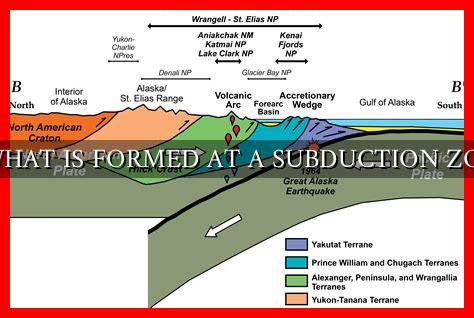-
Table of Contents
What is Formed at a Subduction Zone
Subduction zones are one of the most dynamic and geologically active regions on Earth. These areas are where tectonic plates collide, with one plate sliding beneath another. This process leads to a variety of geological features and phenomena being formed. Let’s explore what exactly is formed at a subduction zone.
Volcanic Arcs
One of the most prominent features formed at subduction zones are volcanic arcs. When the subducting plate descends into the mantle, it heats up and releases water and other volatiles.
. These substances rise into the overlying plate, causing melting in the mantle wedge above the subducting plate. This molten rock then rises to the surface, leading to the formation of volcanoes along the subduction zone.
- Examples of volcanic arcs include the Andes in South America, the Cascade Range in the Pacific Northwest of the United States, and the Japanese Archipelago.
Deep Ocean Trenches
Another feature that is formed at subduction zones are deep ocean trenches. As the denser oceanic plate subducts beneath the less dense continental plate, it creates a deep trench on the ocean floor. These trenches can reach depths of over 10,000 meters and are some of the deepest parts of the Earth’s crust.
- The Mariana Trench in the western Pacific Ocean is the deepest trench in the world, reaching a depth of over 11,000 meters.
Earthquakes
Subduction zones are also known for their seismic activity, with frequent earthquakes occurring along the boundary between the two plates. These earthquakes are caused by the stress and pressure that builds up as the plates interact with each other. The release of this energy can result in powerful earthquakes that can cause significant damage and tsunamis.
- The 2004 Indian Ocean earthquake and tsunami, which originated from a subduction zone off the coast of Sumatra, is one of the deadliest natural disasters in recorded history.
Island Arcs
Island arcs are chains of volcanic islands that form parallel to a subduction zone. These islands are created by the volcanic activity associated with the subduction process. As the molten rock rises to the surface, it forms a series of volcanic islands that can extend for hundreds of kilometers.
- The Aleutian Islands in Alaska and the Lesser Antilles in the Caribbean are examples of island arcs formed at subduction zones.
Conclusion
Subduction zones are fascinating geological features that play a crucial role in shaping the Earth’s surface. From volcanic arcs and deep ocean trenches to earthquakes and island arcs, these regions are dynamic and constantly evolving. By understanding what is formed at a subduction zone, we can gain valuable insights into the processes that drive tectonic activity and shape our planet.
For more information on subduction zones, you can visit National Geographic’s Encyclopedia entry on subduction zones.





